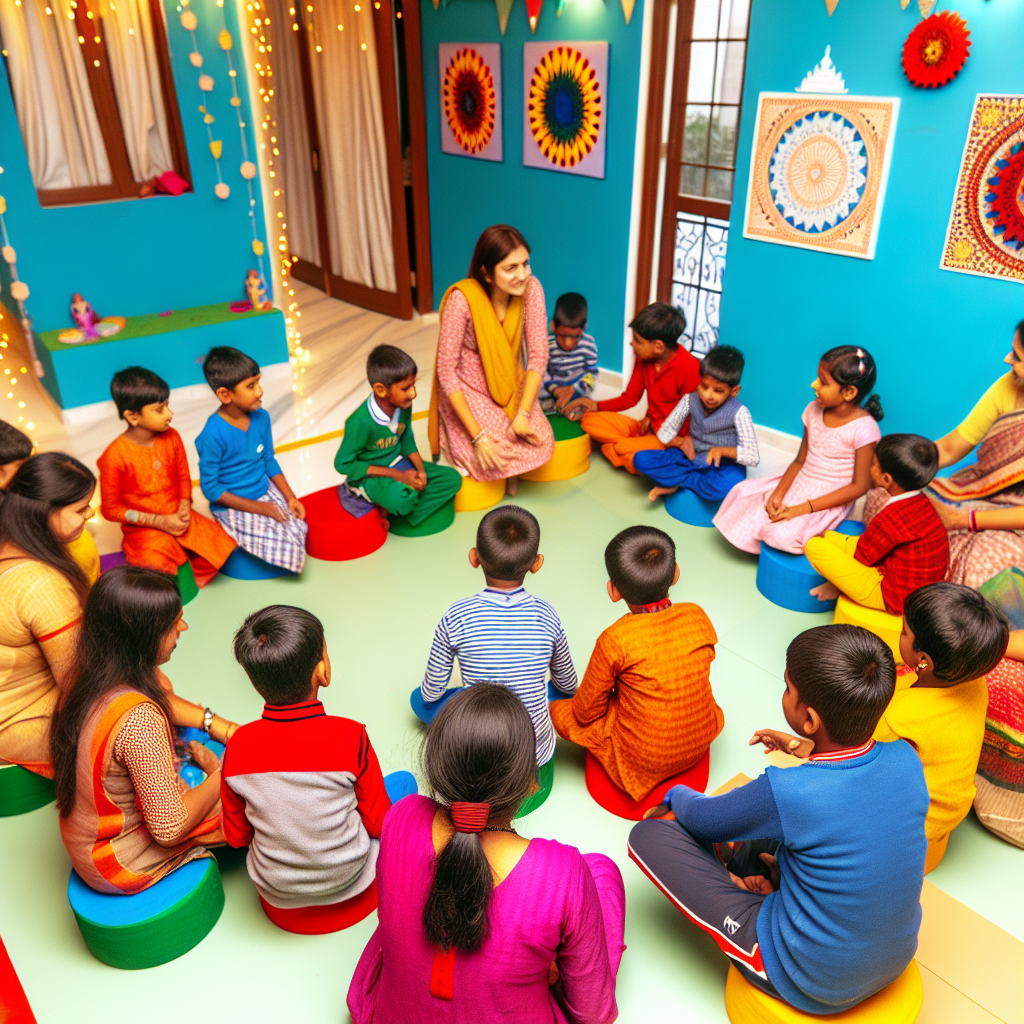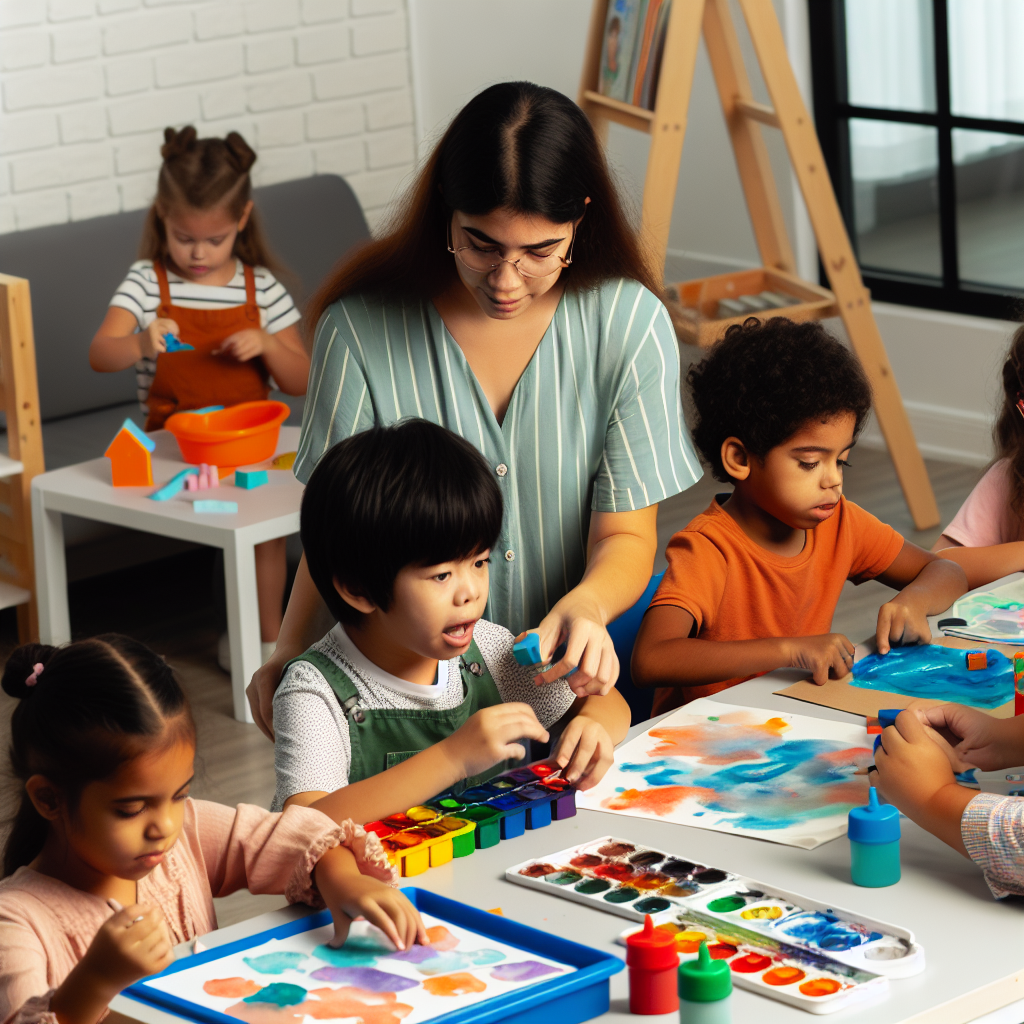How to Use Play-Based Learning to Support Children with Special Needs
Introduction to Play-Based Learning
Play-based learning is a child-centered approach that uses play as a medium for teaching and development. It is particularly effective for children with special needs, as it allows them to explore, learn, and grow in a natural and enjoyable way. This method emphasizes the importance of play in fostering cognitive, social, and emotional development.
For children with special needs, play-based learning can be a powerful tool to overcome challenges and build essential skills. It provides a safe and engaging environment where they can express themselves freely and develop at their own pace.
Research has shown that play-based learning enhances problem-solving skills, creativity, and emotional regulation. It also helps children with special needs build confidence and resilience, which are crucial for their overall development.
By incorporating play into educational and therapeutic settings, caregivers and educators can create meaningful learning experiences. This approach is adaptable and can be tailored to meet the unique needs of each child.
In this article, we will explore how to use play-based learning to support children with special needs. From understanding individual needs to creating an inclusive play environment, we will cover practical strategies and tips.
Whether you are a parent, teacher, or therapist, this guide will provide valuable insights into the benefits and implementation of play-based learning for children with special needs.
Benefits of Play-Based Learning for Children with Special Needs
Play-based learning offers numerous benefits for children with special needs. One of the most significant advantages is its ability to promote cognitive development. Through play, children can explore new concepts, solve problems, and develop critical thinking skills.
Another key benefit is the enhancement of social skills. Play-based activities often involve interaction with peers, which helps children with special needs learn how to communicate, share, and collaborate effectively.
Emotional development is another area where play-based learning excels. It provides a safe space for children to express their feelings, manage stress, and build self-esteem. This is particularly important for children with special needs, who may face unique emotional challenges.
Physical development is also supported through play. Activities like building blocks, drawing, or outdoor games help improve fine and gross motor skills. These skills are essential for daily living and academic success.
Play-based learning is highly adaptable, making it suitable for children with a wide range of special needs. Whether a child has autism, ADHD, or a physical disability, play can be customized to meet their specific requirements.
Finally, play-based learning fosters a love for learning. By making education enjoyable, it encourages children to engage actively and develop a lifelong curiosity for the world around them.
Understanding Individual Needs Through Play
Every child is unique, and this is especially true for children with special needs. Understanding their individual needs is crucial for effective play-based learning. Observing how a child interacts with toys and activities can provide valuable insights into their preferences, strengths, and challenges.
For example, a child with autism may prefer structured activities, while a child with ADHD might thrive in more dynamic and open-ended play. Tailoring play experiences to these preferences can make learning more effective and enjoyable.
Assessment tools like disability screening can also help identify specific needs and guide the selection of appropriate play activities. For more information on disability screening, visit Prashast.org.
Engaging with the child during play is another way to understand their needs. Asking open-ended questions, observing their reactions, and encouraging them to express themselves can provide deeper insights.
It’s also important to consider the child’s developmental stage. While chronological age is a factor, developmental milestones should guide the choice of play activities.
By understanding individual needs through play, caregivers and educators can create personalized learning experiences that support the child’s growth and development.
Creating an Inclusive Play Environment
An inclusive play environment is essential for supporting children with special needs. It ensures that all children, regardless of their abilities, can participate and benefit from play-based learning.
To create an inclusive environment, start by removing physical barriers. Ensure that the play area is accessible to children with mobility challenges. This may involve adding ramps, widening doorways, or providing adaptive equipment.
Next, consider sensory needs. Some children may be sensitive to noise, light, or textures. Providing a variety of sensory-friendly options can make the play environment more comfortable for everyone.
Inclusive play also involves fostering a culture of acceptance and respect. Teach children to value diversity and include their peers in activities. This can be achieved through guided group play and positive reinforcement.
Another important aspect is the availability of diverse toys and materials. Choose items that cater to different abilities and interests, such as tactile toys, puzzles, and interactive games.
Finally, involve children in the design of the play environment. Their input can provide valuable insights and ensure that the space meets their needs and preferences.
Selecting Appropriate Toys and Materials
Choosing the right toys and materials is a critical aspect of play-based learning for children with special needs. The goal is to select items that are engaging, safe, and developmentally appropriate.
Start by considering the child’s interests and abilities. For example, a child who enjoys building might benefit from blocks or construction sets, while a child who loves music might prefer instruments or sound-based toys.
Safety is another important factor. Ensure that toys are free from small parts that could pose a choking hazard and are made from non-toxic materials.
Adaptive toys can be particularly beneficial for children with special needs. These are designed to accommodate specific challenges, such as limited mobility or sensory sensitivities.
It’s also helpful to include a mix of individual and group play options. This allows children to explore different types of interactions and develop a range of skills.
Finally, regularly update the selection of toys and materials to keep the play experience fresh and engaging. This also allows you to introduce new challenges and learning opportunities.
Strategies for Facilitating Play-Based Learning
Facilitating play-based learning requires a thoughtful approach. One effective strategy is to set clear objectives for each play session. This helps ensure that the activities are aligned with the child’s developmental goals.
Another strategy is to use prompts and cues to guide the child during play. For example, you might demonstrate how to use a toy or suggest ways to solve a problem.
Encouraging exploration and creativity is also important. Allow the child to experiment with different ways of playing and support their efforts with positive reinforcement.
Structured play activities can be useful for teaching specific skills, while free play allows for self-expression and creativity. A balanced approach that includes both types of play is often most effective.
Collaboration with other children can enhance the play experience. Group activities provide opportunities for social interaction and teamwork.
Finally, be patient and flexible. Children with special needs may require more time to engage with activities, and their interests may change over time. Adapt your approach as needed to keep them motivated and engaged.
Encouraging Social Interaction Through Play
Social interaction is a key component of play-based learning. For children with special needs, play provides a natural context for developing social skills.
One way to encourage social interaction is through group activities. Games that require teamwork, such as building a tower or solving a puzzle, can help children learn to collaborate and communicate.
Role-playing games are another effective tool. They allow children to practice social scenarios in a safe and controlled environment. For example, playing “store” can teach skills like taking turns and using polite language.
Peer modeling is also beneficial. Pairing a child with special needs with a peer who demonstrates strong social skills can provide a positive example to follow.
It’s important to provide guidance during social interactions. This might involve prompting the child to say “please” or “thank you,” or helping them resolve conflicts in a constructive way.
Finally, celebrate successes. Acknowledge and reward positive social behaviors to reinforce their importance and encourage the child to continue practicing them.
Using Play to Develop Communication Skills
Communication is a fundamental skill that can be developed through play. For children with special needs, play-based activities offer a low-pressure way to practice and improve their communication abilities.
Interactive games, such as “Simon Says” or “I Spy,” can help children learn to follow instructions and express themselves verbally. These games also improve listening skills and attention span.
For non-verbal children, play can be used to develop alternative communication methods. For example, picture cards or communication boards can be incorporated into activities to help the child express their needs and preferences.
Storytelling and pretend play are also effective for building language skills. These activities encourage children to use their imagination and expand their vocabulary.
Music and songs can be another valuable tool. Singing along to simple tunes or using musical instruments can make learning new words and phrases more enjoyable.
Finally, be sure to model good communication during play. Use clear and simple language, maintain eye contact, and encourage the child to respond in their own way.
Monitoring Progress and Adjusting Activities
Monitoring progress is an essential part of play-based learning. It allows caregivers and educators to assess the effectiveness of activities and make necessary adjustments.
One way to track progress is through observation. Take note of how the child engages with different activities, their level of participation, and any new skills they demonstrate.
Another method is to use assessment tools or checklists. These can help quantify progress and identify areas that need further development.
Regularly reviewing the child’s goals is also important. As they achieve milestones, set new objectives to keep them challenged and motivated.
Feedback from the child is invaluable. Ask them what they enjoy about the activities and what they find challenging. This can provide insights into how to improve the play experience.
Finally, collaborate with other professionals, such as therapists or teachers, to ensure a consistent and comprehensive approach to the child’s development.
Collaborating with Families and Professionals
Collaboration is key to the success of play-based learning for children with special needs. Families and professionals bring unique perspectives and expertise that can enhance the learning experience.
Start by involving families in the planning process. Discuss the child’s interests, strengths, and challenges to create a tailored play-based learning plan.
Regular communication is essential. Share updates on the child’s progress and seek feedback from families to ensure that the activities are meeting their needs.
Professionals, such as occupational therapists or speech therapists, can provide valuable insights and resources. Their expertise can help address specific challenges and enhance the effectiveness of play-based learning.
Workshops and training sessions can also be beneficial. These provide families and professionals with the tools and knowledge they need to support the child’s development through play.
Finally, celebrate successes together. Acknowledge the contributions of everyone involved and recognize the child’s achievements to foster a sense of community and shared purpose.
Conclusion
Play-based learning is a powerful tool for supporting children with special needs. It offers a flexible and engaging approach to teaching essential skills, from communication and social interaction to cognitive and physical development.
By understanding individual needs, creating an inclusive environment, and selecting appropriate toys and materials, caregivers and educators can maximize the benefits of play-based learning.
Strategies like encouraging social interaction, developing communication skills, and monitoring progress ensure that the learning experience is both effective and enjoyable.
Collaboration with families and professionals further enhances the impact of play-based learning, creating a supportive network that fosters the child’s growth and development.
Whether you are a parent, teacher, or therapist, incorporating play-based learning into your approach can make a




Awesome
Awesome
Very good